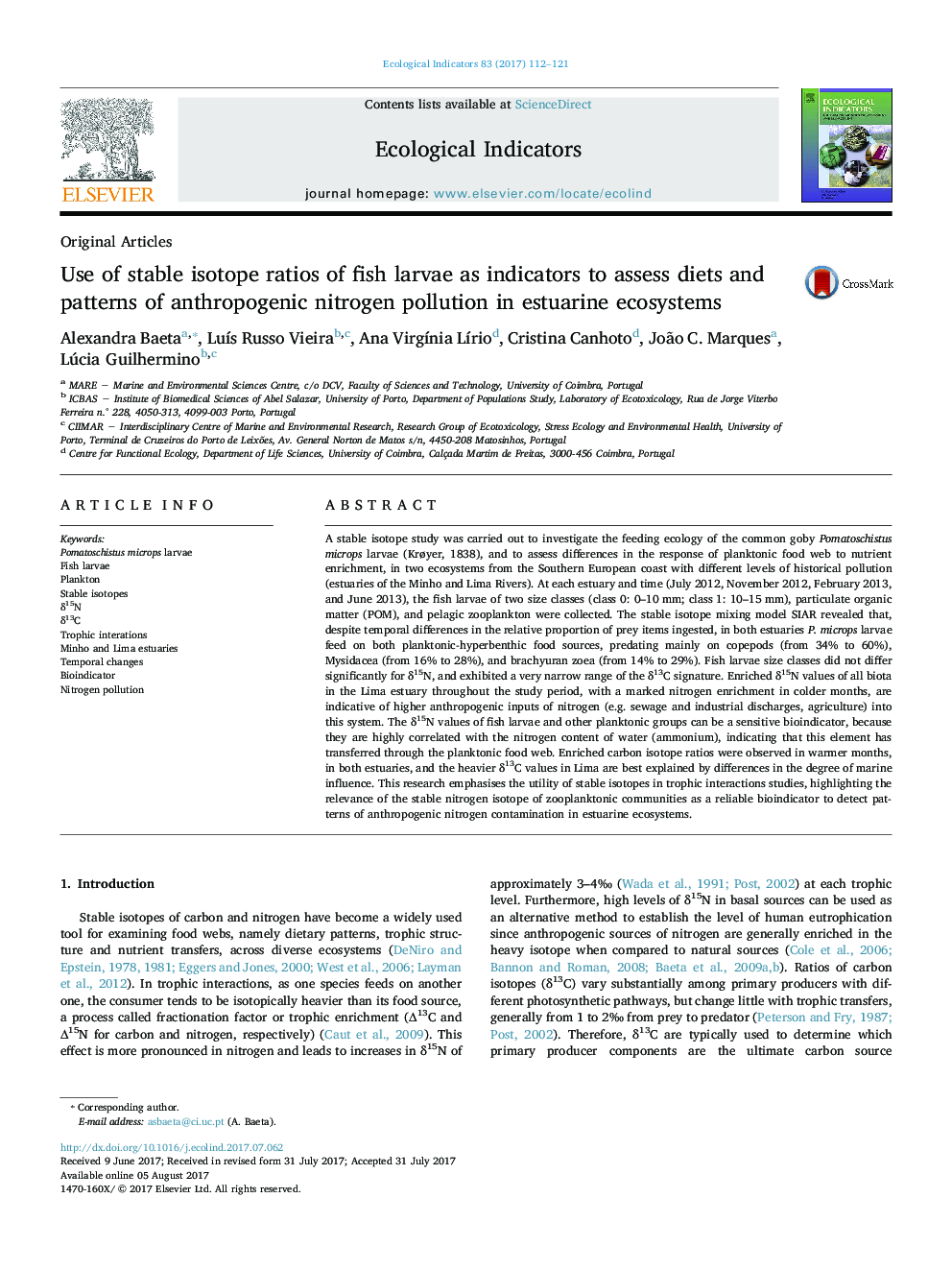| کد مقاله | کد نشریه | سال انتشار | مقاله انگلیسی | نسخه تمام متن |
|---|---|---|---|---|
| 5741483 | 1617119 | 2017 | 10 صفحه PDF | دانلود رایگان |
- δ15N and δ13C of fish larvae were used to assess diets and anthropogenic nitrogen pollution in two estuaries.
- Stable isotope ratios are useful indicators of Pomatoschistus microps larvae diet.
- Bayesian mixing models revealed preferred prey and seasonal differences in the relative proportion of prey items ingested.
- δ15N values were highly correlated with ammonium concentration in the water column.
- δ15N in fish larvae is a reliable bioindicator of anthropogenic nitrogen pollution in estuarine ecosystems.
A stable isotope study was carried out to investigate the feeding ecology of the common goby Pomatoschistus microps larvae (Krøyer, 1838), and to assess differences in the response of planktonic food web to nutrient enrichment, in two ecosystems from the Southern European coast with different levels of historical pollution (estuaries of the Minho and Lima Rivers). At each estuary and time (July 2012, November 2012, February 2013, and June 2013), the fish larvae of two size classes (class 0: 0-10 mm; class 1: 10-15 mm), particulate organic matter (POM), and pelagic zooplankton were collected. The stable isotope mixing model SIAR revealed that, despite temporal differences in the relative proportion of prey items ingested, in both estuaries P. microps larvae feed on both planktonic-hyperbenthic food sources, predating mainly on copepods (from 34% to 60%), Mysidacea (from 16% to 28%), and brachyuran zoea (from 14% to 29%). Fish larvae size classes did not differ significantly for δ15N, and exhibited a very narrow range of the δ13C signature. Enriched δ15N values of all biota in the Lima estuary throughout the study period, with a marked nitrogen enrichment in colder months, are indicative of higher anthropogenic inputs of nitrogen (e.g. sewage and industrial discharges, agriculture) into this system. The δ15N values of fish larvae and other planktonic groups can be a sensitive bioindicator, because they are highly correlated with the nitrogen content of water (ammonium), indicating that this element has transferred through the planktonic food web. Enriched carbon isotope ratios were observed in warmer months, in both estuaries, and the heavier δ13C values in Lima are best explained by differences in the degree of marine influence. This research emphasises the utility of stable isotopes in trophic interactions studies, highlighting the relevance of the stable nitrogen isotope of zooplanktonic communities as a reliable bioindicator to detect patterns of anthropogenic nitrogen contamination in estuarine ecosystems.
Journal: Ecological Indicators - Volume 83, December 2017, Pages 112-121
